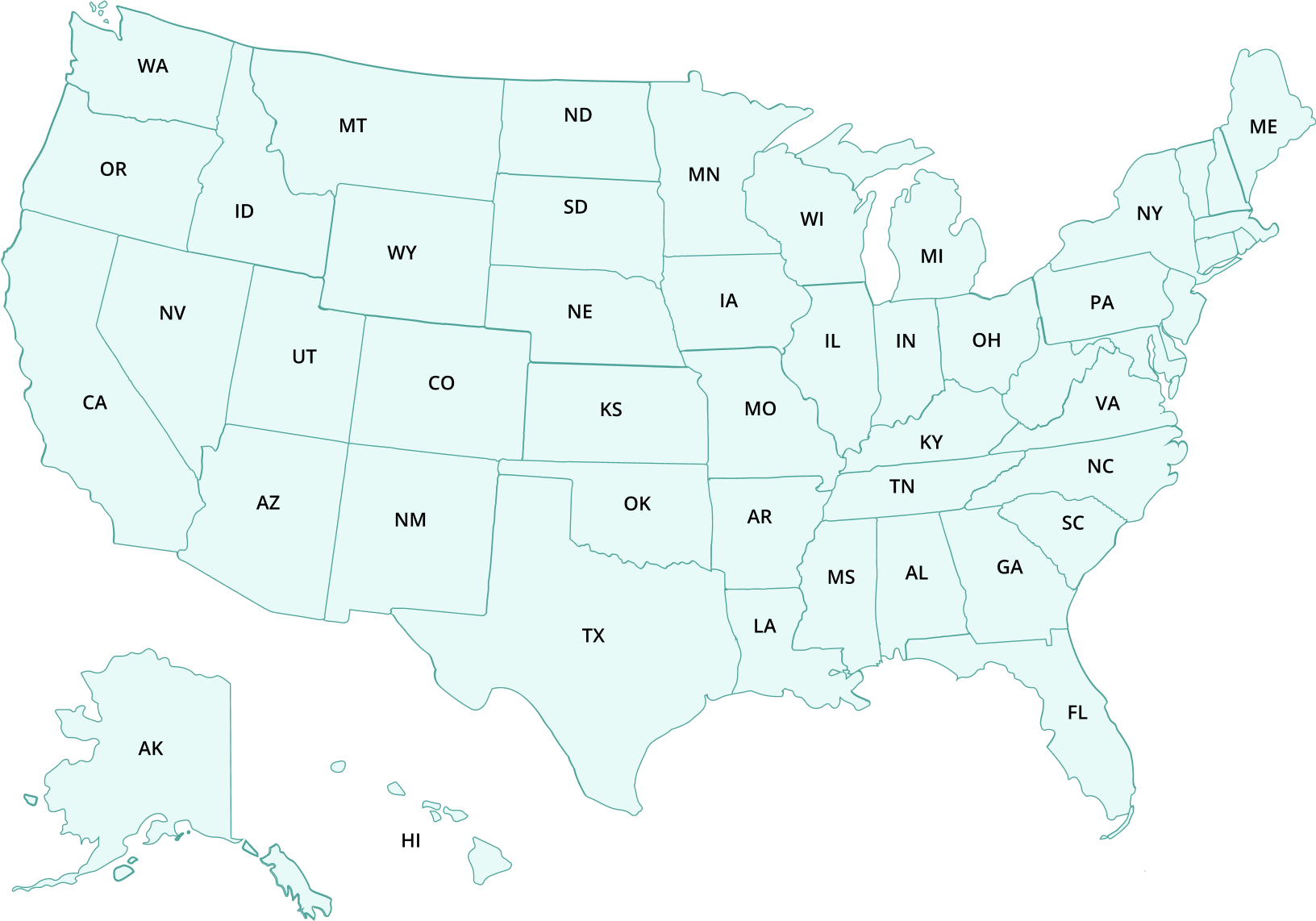Sober living homes were initially created for patients who have just finished drug rehab programs. The idea of going back to a world full of stresses and anxieties and trying to live independently without drinking is often nerve-racking. There are also palpable dangers of this radical transformation.
Table Of Contents:
Recovering addicts have been known to relapse after finding themselves unable to cope with the demands of living independently and staying away from alcohol. This is why looking for sober living near me is a common option for them. A sober house can help them to make further transition smoother and stress-free.
What Is a Halfway House?
A halfway house or a sober living home is a group home where people recovering from alcohol addiction or drug abuse can choose to stay while undergoing treatment programs or after leaving an addiction treatment center. Their primary purpose is to help recovered alcoholics or drug addicts to transition back smoothly into society. In addition, they allow clients to adjust back into society by helping them reinforce the lessons they learned as part of treatment in the rehabilitation center.

The central philosophy in a sober house is involvement in the 12-step programs. Research has shown that changing the living environment of an addict to a system with a good social network improves treatment outcomes. Based on one study, the idea of a halfway house or sober living homes can date back to as early as the 1960s and 70s. Various studies have shown that removing a client’s destructive environment and creating a new social support network helped them get rid of their addiction.
Sober Homes: Who Are They For?
The primary purpose of a sober living house is to provide an environment where clients are supported and motivated in maintaining sobriety and preventing relapse.
They also help clients to transition smoothly from the structured and guided world of inpatient rehab to mainstream life so that they can experience the joy of continued sobriety instead of only experiencing the pink clouding and then relapsing.
Living at such a facility is not mandatory for recovering addicts. However, some people are recommended to stay in sober houses until they feel they can join the real world without falling into any of their old, destructive substance abuse habits.
These Cases Are Described Below:
- People who have completed rehab in the past are encouraged to stay at a sobriety house to reinforce the constructive habits, and lifestyle changes learned at the center.
- People who feel that the living environment back in their homes may not help them in preventing relapse.
- People who need a temporary shelter until they find a place of their own are also advised to stay in halfway houses.
- People who do not have enough resources to afford a residential treatment program can get inducted at an outpatient treatment program while staying in recovery housing.
- After some kind of rehab treatment, if someone believes they are still not ready to join the world or face the people that might enable their alcoholism or drug addiction, they can join a sober living program to assist them further in getting a hold on their lives.
There are numerous options for staying at halfway houses and sober living homes across the country. If you or your loved one is now looking for a sober living near me just call our toll-free 24/7 helpline to get the professional assistance and find the option that suits your needs.
Hope Without Commitment
Find the best treatment options. Call our free and confidential helpline
Most private insurances accepted
Difference Between Sober House and Halfway House
Halfway houses and sober living homes are essentially quite similar. They both provide a supportive living environment where people recovering from addiction or getting treated for addiction can live together in sobriety.
However, There Are Certain Differences Between Sober Living Home and Halfway House, Which Are Elaborated Below:
| HALFWAY HOUSE | SOBER LIVING HOUSE |
|---|---|
| There is a certain time limit for each client at a halfway house, after which they have to leave the facility whether they want to or not. | These houses allow residents to stay there for as long as they want to. |
| Halfway houses usually require clients to either have completed some formal treatment program or be attending some outpatient program for them to stay. | Sober houses usually do not require the clients to have completed any form of substance abuse treatment plans. |
| Participation in 12-step program activities is not mandatory for all halfway houses. | Most homes require clients to attend 12-step meetings regularly. |
| Halfway houses are often funded by the government or by some treatment centers, which means that if the funding gets cut, residents are forced to leave the facility. | Sober houses do not have any funding issues. Those staying there or their families pay for the time they stay at the house. |
Sober Living House Rules
Each recovery house has certain rules that each resident must follow to continue living at the facility. These rules vary in different homes. Some may have very strict rules, while others allow more flexibility and freedom.
However, the Basic Rules Are as Follows:
- Inhabitants have to agree to follow all the house rules, and any violation may result in consequences. They can be paying a fine, apologizing to others, or even in some cases, being asked to move out.
- Residents have to be clean from alcohol or drugs when they enter the house and should continue to stay dry for all the period they live there.
- No kind of drug or alcohol is allowed in the house. It includes the use of any item that might contain alcohol, for example, a mouthwash.
- Everyone is required to pay rent for staying in a sober living home.
- Residents are required to help around the house by doing chores assigned to them. These can include cleaning, cooking, grocery shopping, and others.
- Inhabitants are encouraged to go to school or find work while staying at the facility.
- Most houses have curfew hours, which means residents have to be back home by a designated time.
- Residents may be required to attend regular 12-step programs, like Alcoholics Anonymous or similar sessions.
- They may be required to participate in support group meetings.
- They may be subjected to periodic alcohol screening tests, which they must pass.
- Everyone is required to respect fellow residents and staff members.
- Most halfway houses have defined quiet hours, which the residents must obey.
- With many people living in one place, shower times may be assigned to everyone, which they must follow.
- Most housing communities allow standard family visit days, which must be followed.
Benefits Of Staying In a Sober House
Living at a sober living house can have immense benefits for recovering addicts. According to this study about their philosophy, structure, and therapeutic benefits, the sober house serves as alcohol and drug-free living environment, which helps addicts succeed in their recovery.
Some of These Benefits Are Listed Below:
- Halfway houses provide a supportive and safe environment that serves as an intermediary between a rehab facility and the real world.
- Sober homes provide an environment where recovering addicts can stay motivated by spending time with fellow residents in recovery.
- There are professionals at halfway houses who help patients and guide them in maintaining their sobriety. Residents can find a sobriety coach who can encourage them to attend meetings and counseling sessions.
- Many homes have life skills training and job aptitude evaluation facilities, which help residents during their job hunt.
- Many halfway houses encourage patients to continue their education by enrolling in a school that enables them to improve their education while in recovery.
- Most sober homes organize 12-step meetings or counseling sessions, which help them in maintaining sobriety.
- Some sober houses also help their residents find a place to live when they leave the facility.
Sober Living Homes Cost
Living in a sober home is less expensive than being admitted to a rehab facility. Some of them offer reduced rental prices, while others are government-funded and are free.
Residents have to pay monthly rent, which is usually between $450 – $800 per month. Some houses also accept payments from Medicare or private insurance companies.
A recovery house provides a smooth transition from a residential rehab program’s sheltered and disciplined life into a chaotic and unstructured world of duties and responsibilities. By empowering individuals with emotional strength and teaching them the requisite life skills and coping strategies, sober living homes help prevent relapses and create opportunities to rebuild shattered lives and fix broken relationships.
Finding the Best Recovery House
There are countless halfway houses, but not all will fulfill their unique needs. So don’t fall for the glossiest ad! Consider the following factors to choose the best recovery house that lets one recover from issues stress-free:
Credibility
Do a lot of research well to ensure that a person chooses a reputable organization. Speaking to former and current residents can help to gather the facts. The Commission on Accreditation of Rehabilitation Facilities certifies sober living homes throughout the U.S. based on the quality of care they provide. The National Alliance on Recovery Residences lists the homes that meet their stringent quality criteria.

Admittance Criterion
Some homes require that one goes through a formal, medically-assisted detox program. In contrast, others will accept an individual as long as they can prove that they are free of withdrawal symptoms and are not suffering from alcoholism-induced physical and mental disorders. Most homes require that one has been clean for some period.
House Rules
Rules vary across homes. However, all require that one has to be clean during a stay. Some houses are so strict that they even ban people from using certain mouthwashes because they contain alcohol. Besides, most houses require residents to attend a 12-step program like Alcoholics Anonymous and agree to random alcohol screening tests. There are also non-12 step homes.
Location
A sober house will usually be located in quiet neighborhoods where the environment aids the healing process. But make sure that the home is not on a street or area littered with bars. Although such recovery facilities strengthen addicts’ motivation, most of them prefer to avoid places that can trigger a relapse. One would also like to stay somewhere close to the place of study or work to attend the house meetings and adhere to the curfew timings.
Cost
Staying in a sober living home is less costly than getting admitted to an inpatient alcohol rehab facility. There are low-cost homes, while some let needy people stay at reduced rental prices. Government-funded halfway houses and those run by non-profit organizations are free.
Some homes accept Medicare, Medicaid, or private insurance. Some homes let to negotiate a payment plan or offer flexibility with the first month’s rent.
Services
Although sober living homes do not provide the extensive gamut of facilities of a residential rehab center, one can find houses that offer various therapies. These can include therapies for families, customized coaching and mentoring programs, legal support to deal with custody or employment issues, music and art therapy, job search support, meditation and yoga classes, and Jewish meals. Of course, the more the services on offer, the steeper will be the cost of living.
Living in a sober home is less expensive than being admitted into a rehab facility. It provides a smooth transition from the sheltered and disciplined life in rehab into everyday life without supervision. By empowering an individual with emotional strength and teaching them the requisite life skills and coping strategies, sober living homes help prevent relapses and create opportunities to rebuild shattered lives and fix broken relationships.
Find Drug Rehabilitation Centers Near You Anywhere In the US
Addiction Resource team has compiled an extensive list of the top drug rehabilitation facilities around the country. Click on the state you are interested in, and you'll get a list of the best centers in the area, along with their levels of care, working hours, and contact information. Haven't found the rehab you need? Call the toll-free helpline below for professional assistance.

- Alabama
- Alaska
- Arizona
- Arkansas
- California
- Colorado
- Connecticut
- Delaware
- Florida
- Georgia
- Hawaii
- Idaho
- Illinois
- Indiana
- Iowa
- Kansas
- Kentucky
- Louisiana
- Maine
- Maryland
- Massachusetts
- Michigan
- Minnesota
- Mississippi
- Missouri
- Montana
- Nebraska
- Nevada
- New Hampshire
- New Jersey
- New Mexico
- New York
- North Carolina
- North Dakota
- Ohio
- Oklahoma
- Oregon
- Pennsylvania
- Rhode Island
- South Carolina
- South Dakota
- Tennessee
- Texas
- Utah
- Vermont
- Virginia
- Washington
- West Virginia
- Wisconsin
- Wyoming
Page Sources
- Polcin, D. L., Korcha, R., Bond, J., & Galloway, G. (2010). What did we learn from our study on sober living houses and where do we go from here?. Journal of psychoactive drugs, 42(4), 425-433. https://www.ncbi.nlm.nih.gov/pmc/articles/PMC3057870/
- Polcin, D. L., & Henderson, D. M. (2008). A clean and sober place to live: Philosophy, structure, and purported therapeutic factors in sober living houses. Journal of psychoactive drugs, 40(2), 153-159. https://www.ncbi.nlm.nih.gov/pmc/articles/PMC2556949/
- Polcin, D. L., & Korcha, R. (2015). Motivation to maintain sobriety among residents of sober living recovery homes. Substance Abuse and Rehabilitation, 6, 103. https://www.ncbi.nlm.nih.gov/pmc/articles/PMC4574796/
- Heslin, K. C., Singzon, T. K., Farmer, M., Dobalian, A., Tsao, J., & Hamilton, A. B. (2013). Therapy or threat? Inadvertent exposure to alcohol and illicit drug cues in the neighbourhoods of sober living homes. Health & social care in the community, 21(5), 500-508. https://pubmed.ncbi.nlm.nih.gov/23551743/
- Mericle, A. A., Mahoney, E., Korcha, R., Delucchi, K., & Polcin, D. L. (2019). Sober living house characteristics: A multilevel analyses of factors associated with improved outcomes. Journal of substance abuse treatment, 98, 28-38. https://www.sciencedirect.com/science/article/abs/pii/S0740547218303143
- Mueller, D. G., & Jason, L. A. (2014). Sober-living houses and changes in the personal networks of individuals in recovery. Health psychology research, 2(1). https://www.ncbi.nlm.nih.gov/pmc/articles/PMC4768561/

 Authored by
Authored by  Reviewed by
Reviewed by 










